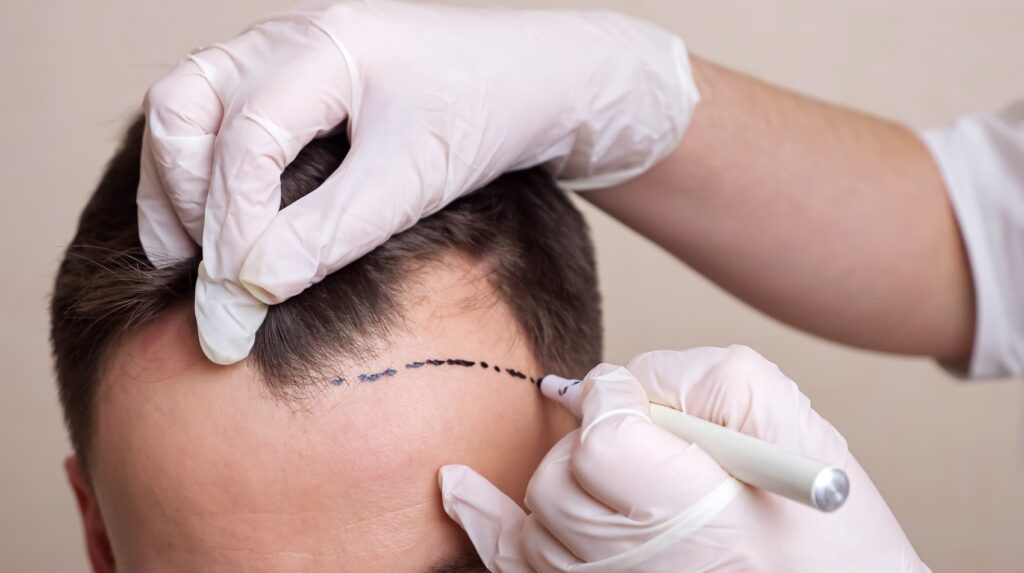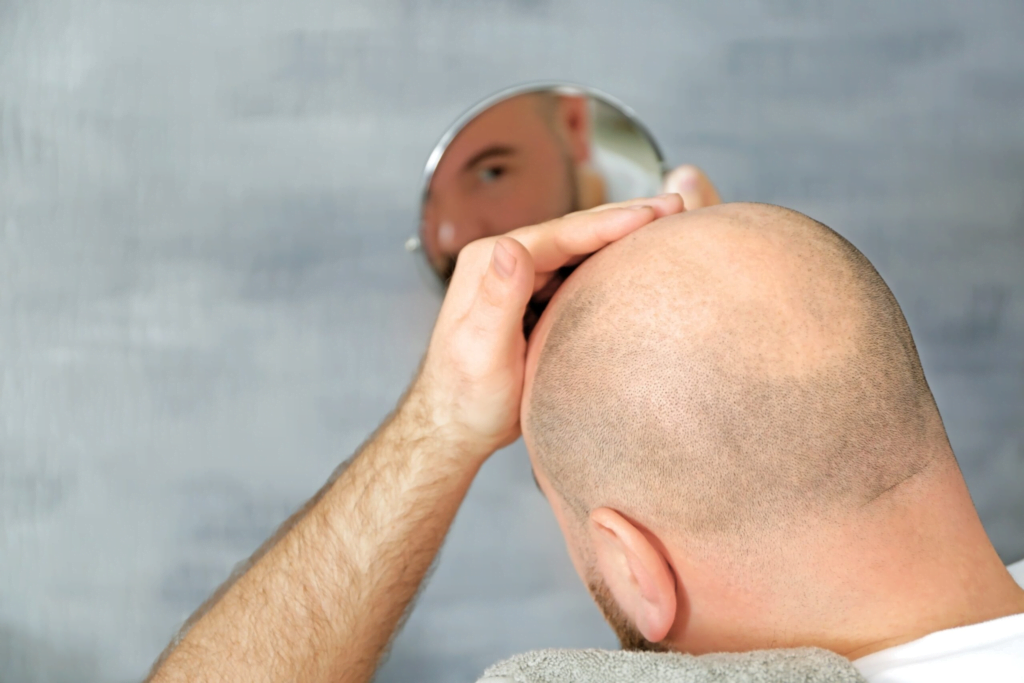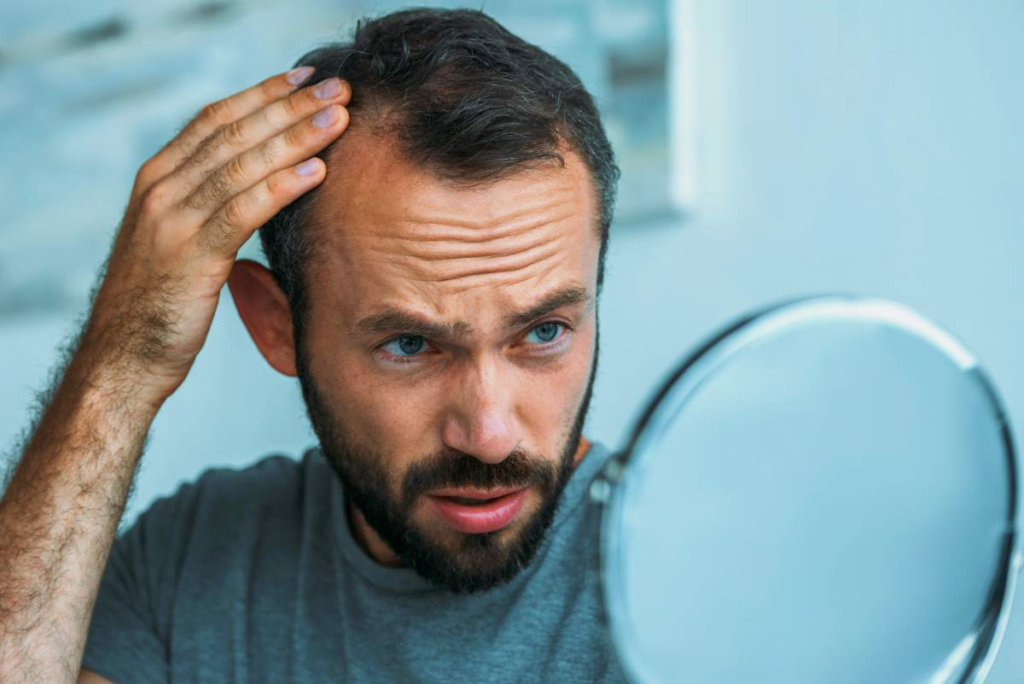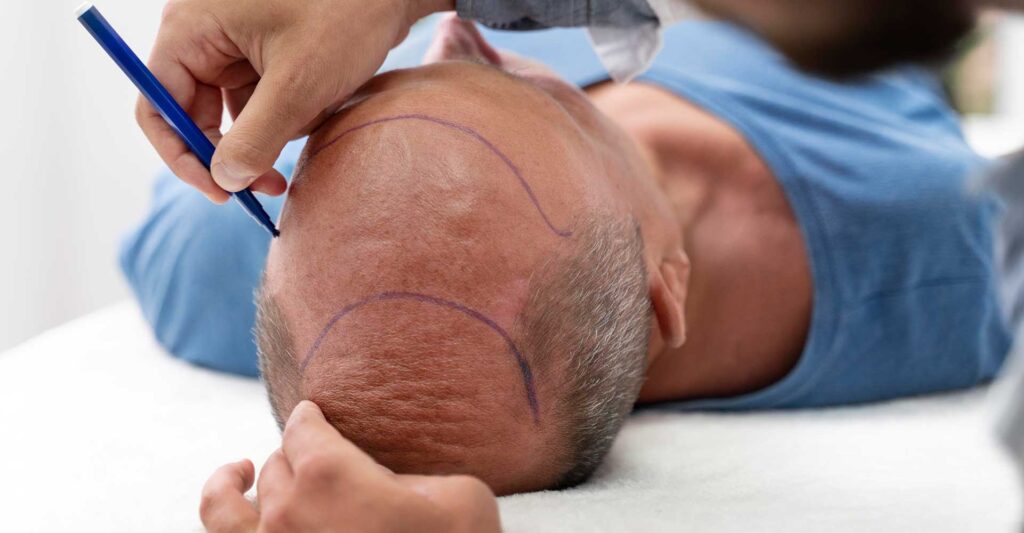
Ent (haar Graft (haarstrengen) is een essentieel onderdeel van een haartransplantatie. Weet u wat graft betekent en zijn uw verwachtingen realistisch? Bij haartransplantatie is het "graftnummer" of "aantal haarstrengen" een van de factoren die direct van invloed zijn op het succes van de procedure en de te bereiken haardichtheid. 1.
Indicaties
1. Wat is graft bij haartransplantatie?
Een graft, in de eenvoudigste definitie, verwijst naar een klein stukje huid met haarzakjes. Je kunt de graft als volgt beter begrijpen: een graft bevat 1 tot 4 haarstrengen. Deze worden meestal uit de nek (donorgebied) gehaald en getransplanteerd naar het kalende gebied.
De nek is het gebied met de minste erfelijke en permanente haaruitval, dus hier worden de haarstrengen geselecteerd. Dit kan het proces wat verduidelijken: Ervan uitgaande dat er gemiddeld 2,2 haren in één graft zitten,e: 3000 grafts × 2,2 = ongeveer 6600 haren.
2. Wat is het ideale aantal transplantaten?
Het ideale aantal kan per persoon verschillen, afhankelijk van uw persoonlijke verwachtingen en uw bestaande haarstructuur, maar het algemene beeld is als volgt:
- Frontale haarlijn: 1000 – 1500
- Toppunt: 1500 – 2500
- Hele bovenkop (volledige beplanting): 3500 – 5000
Als de donorplek niet sterk en gezond genoeg is, is het misschien niet mogelijk om zoveel haarstrengen te krijgen.
3. Is het aantal grafts of het aantal haarstrengen belangrijk bij haartransplantatie?
Beide zijn extreem belangrijk voor een haartransplantatieproces waarvan verwacht wordt dat het gezond verloopt. Het aantal haarstrengen geeft echter de meest nauwkeurige meting. Sommige centra zeggen dat ze veel haarstrengen transplanteren, maar de haarstrengen bevatten mogelijk slechts één haarfollikel. Daarom kunnen er antwoorden zijn zoals "er zijn 5000 grafts getransplanteerd, maar het aantal was erg beperkt".
4. Waar moet je op letten bij transplantaten?
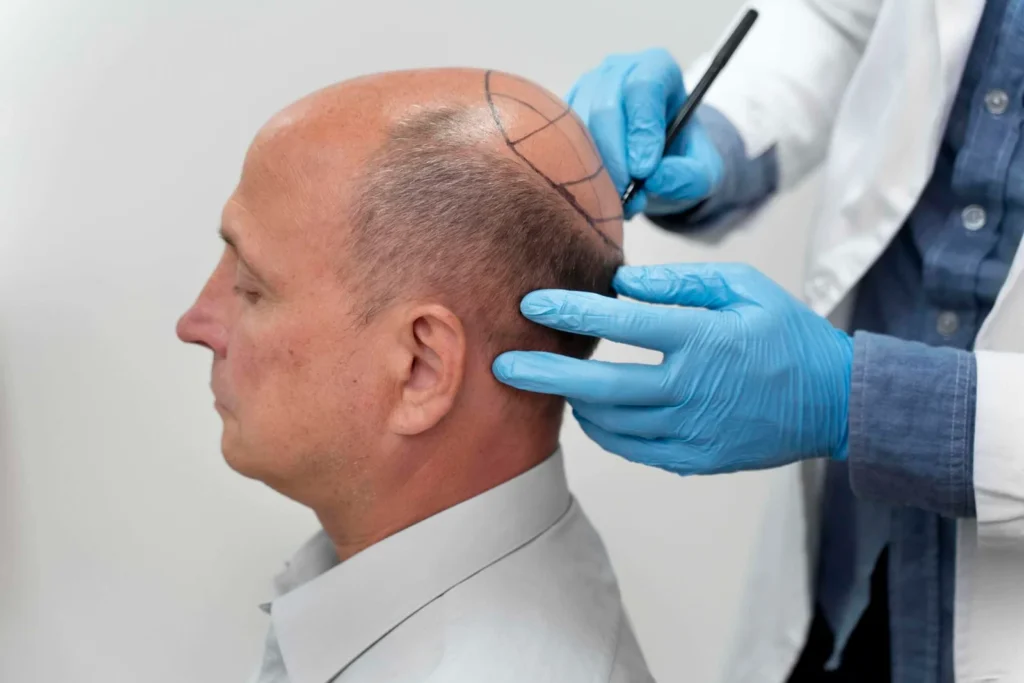
Als u een haartransplantatie overweegt, is het nuttig om te weten wat een graft is. Zo kunt u het haartransplantatieproces met realistische verwachtingen evalueren. Hier zijn de punten waar u op moet letten:
- Als er te veel transplantaten worden genomen, kan de donorplek schaars worden,
- Voor een realistische dichtheid zijn de kwaliteit en de verdeling van de haarstrengen doorgaans belangrijker en moeten goed worden geëvalueerd,
- Het betekent niet altijd: “veel haarstrengen, goede resultaten”.
- Het is noodzakelijk om voorafgaand met uw chirurg de mogelijkheden te bespreken, zodat eventuele zorgen hierover kunnen worden opgelost.
5. Kan er geen haartransplantatie worden uitgevoerd als er niet genoeg haartjes zijn?
Het succes en de haalbaarheid van een haartransplantatie hangen af van het aantal. Het is echter niet 100% correct om te zeggen: "Haartransplantatie is niet mogelijk als het aantal haartransplantaties onvoldoende is." Om dit echter nauwkeuriger te beoordelen, is het noodzakelijk om te overwegen wat er kan worden gedaan met het te transplanteren gebied, andere oplossingen of het uitstellen van de procedure:
5.1. Waarom is het aantal mogelijk onvoldoende?
- Als het donorgebied, dat wil zeggen het haar in de nek, erg dun is,
- Afname van haarstrengen als gevolg van eerdere haartransplantatie,
- Genetisch zeer dunne of enkele haarzakjes,
- Wanneer er bijvoorbeeld sprake is van haaruitval over een heel groot gebied, wordt het aantal grafts over het algemeen als onvoldoende beschouwd.
5.2. Wat gebeurt er als het aantal onvoldoende is?
- Als er niet genoeg haarstrengen zijn voor het hele hoofd, kan een beperkte toepassing worden toegepast op alleen de voorste haarlijn en de kruin.
- Er kan een sobere maar meer natuurlijke uitstraling worden bereikt.
- Lichaamshaar kan, met uitzondering van de nekharen, een andere structuur hebben dan hoofdhaar, maar dit wordt alleen als laatste redmiddel gebruikt.
- Technieken zoals DHI en FUE maken frequentere en gecontroleerdere plaatsing van transplantaten mogelijk. Zo kan het gevoel van meer dichtheid worden gecreëerd met minder transplantaten.
5.3. Wat kan er gedaan worden als het aantal onvoldoende is? (Alternatieven)
- Haartransplantatie kan worden ondersteund met haarstrengen afkomstig van baard- en borsthaar,
- Haaruitval kan medisch worden vertraagd met medicijnen zoals Minoxidil en finasteride.
Conclusie
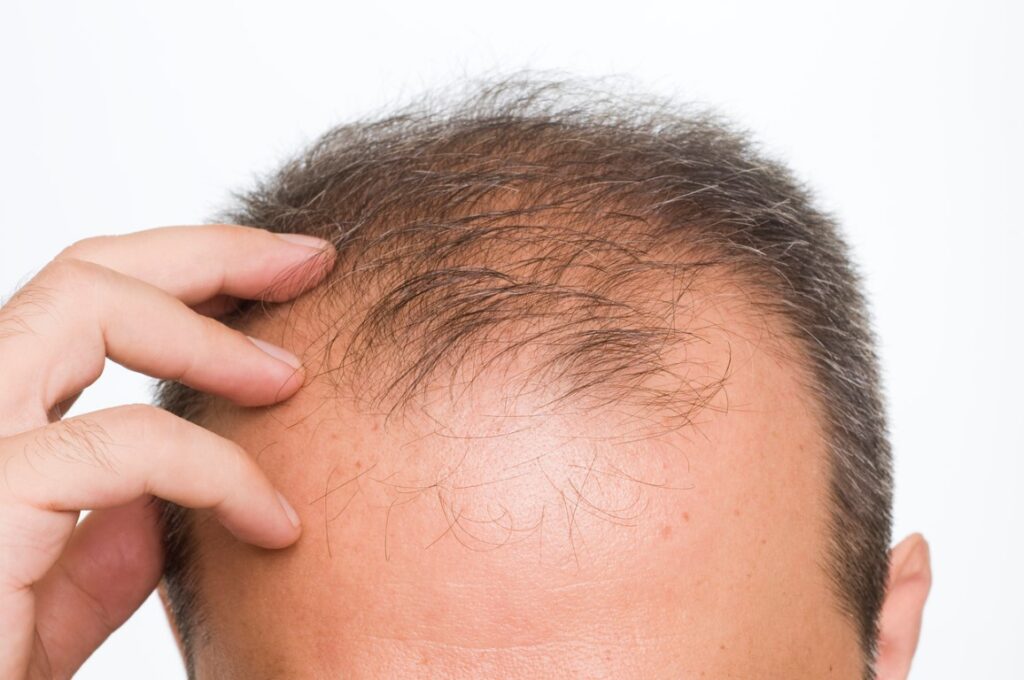
De graft is de meest over het hoofd geziene, maar fundamentele bouwsteen van haartransplantatie. Hoewel het aantal de dichtheid van de transplantatie bepaalt, heeft de kwaliteit van de grafts direct invloed op de natuurlijkheid en het effect van de resultaten. Het aantal is niet het enige dat telt voor een succesvolle haartransplantatie. De gezondheidOok de structuur en de juiste plaatsing van de haarstrengen zijn van groot belang.
In gevallen waar het aantal grafts onvoldoende is, is het te transplanteren gebied beperkt of kan ondersteuning worden gezocht in alternatieve gebieden (zoals baard, borst). Bovendien kan met minder grafts een andere dichtheidsperceptie worden gecreëerd; dit hangt af van de ervaring, het ontwerp en de gebruikte techniek van de chirurg (zoals FUE, DHI). Kortom, de graft is de meest kritische en belangrijkste factor die de kwaliteit en het succes van een haartransplantatie bepaalt.
Hairtrans.com is opgericht door de wereldberoemde plastisch chirurg Dr. MFO, die een expert is op het gebied van gezichtsfeminisering of gezichtsmasculinisatieoperaties, en onder zijn leiding wordt geleid. Wilt u een haartransplantatie onder begeleiding van een plastisch chirurg met jarenlange ervaring?
Of je nu een transvrouw bent of een geboren man of vrouw, als je op zoek bent naar de beste haartransplantatie, contact wij nu.
